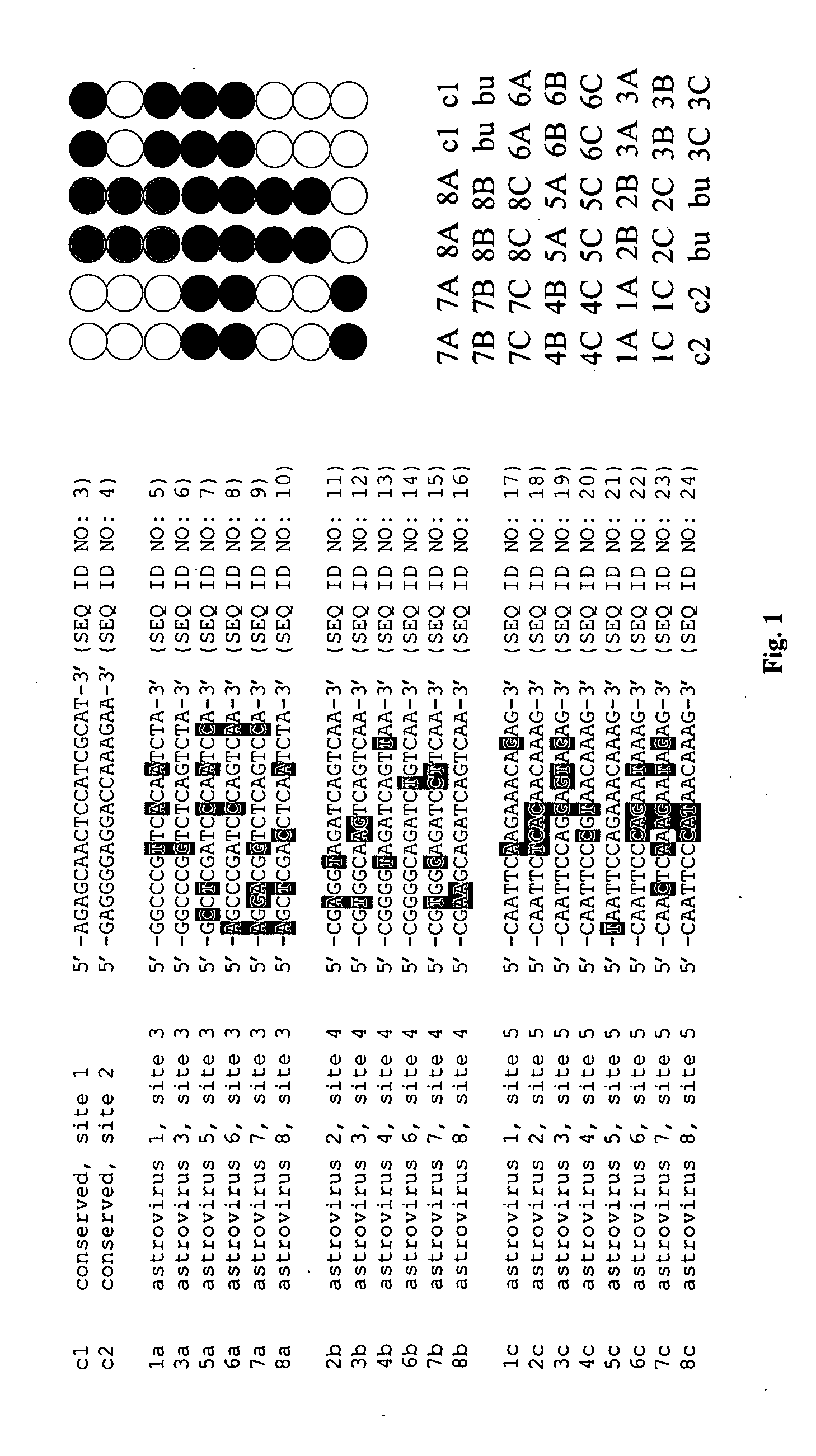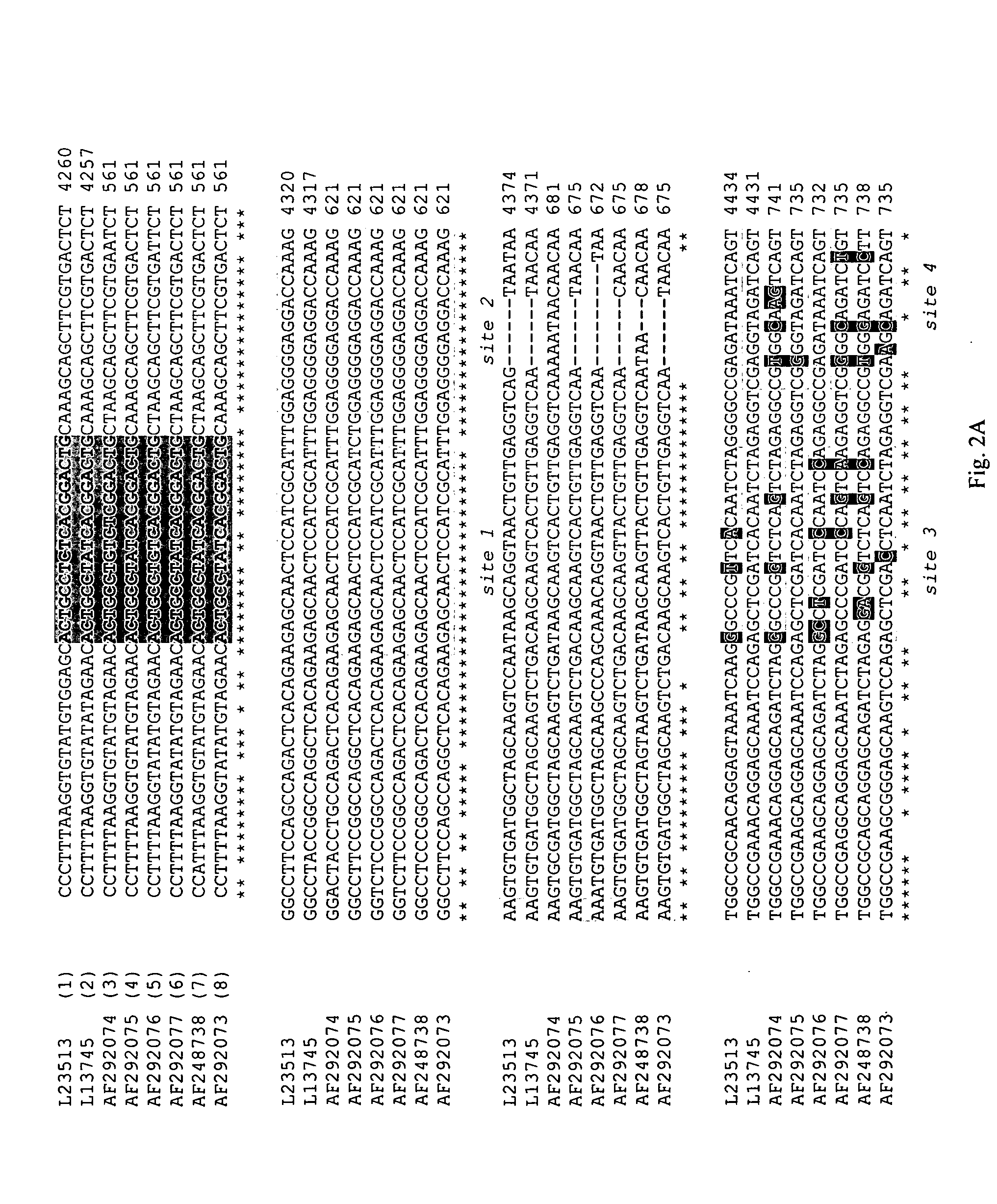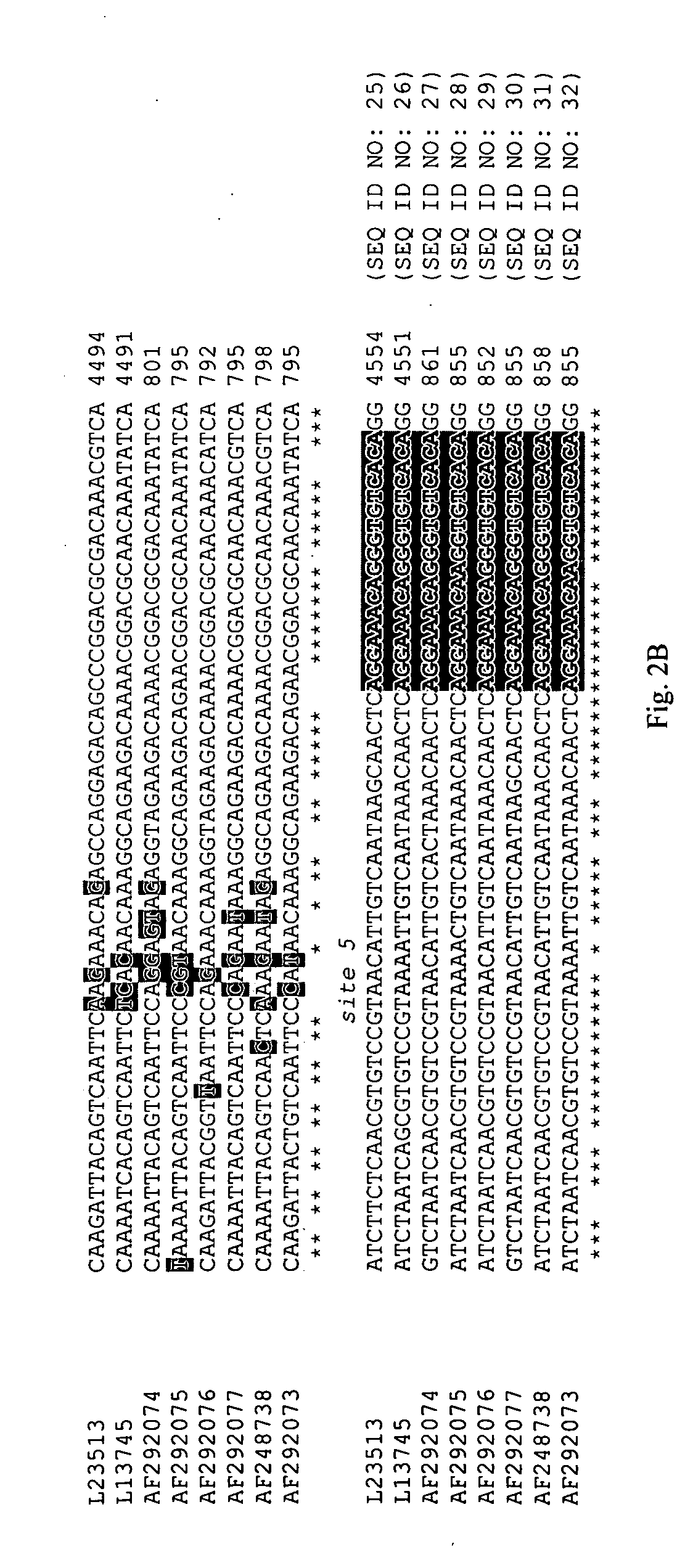Methods and microarrays for detecting enteric viruses
a microarray and enteric virus technology, applied in the field of methods and microarrays for detecting enteric viruses, can solve the problems of inefficiency and/or time-consuming, further complicated diagnosis of astrovirsus infection, and no serotype, so as to improve the diagnosis of gastrointestinal illness, improve the individual's treatment, and improve the quality of li
- Summary
- Abstract
- Description
- Claims
- Application Information
AI Technical Summary
Benefits of technology
Problems solved by technology
Method used
Image
Examples
example 1
MATERIALS AND METHODS
Cell Culture and Virus Strains:
[0065]Viral isolates representative of the 8 known astrovirus serotypes were tested. Original seed viruses for astroviruses types 1-7 were obtained from a laboratory from Oxford, England. These were passed four times in Caco-2 cells for use as stock viruses. Caco-2 cells were obtained from the American Type Culture Collection, Manassas, Va. The cells were grown in D-MEM medium with 10% fetal bovine serum added. Additionally, a stool sample containing astrovirus type 8 was obtained from a laboratory from the University of Cambridge, Cambridge, U.K. This sample was used for the present study directly. For virus passage, cells were rinsed twice with serum-free D-MEM and inoculated with 100 μl of original seed or passaged virus stocks at 37° C. for one hour. The inoculum was removed and 1.0 ml of D-MEM containing 100 units penicillin, 100 μg streptomycin, 10 μg gentamicin, 1.0 μg amphotericin B, and 20 μg porcine trypsin 1:250 (Gibco B...
example 2
Results
Primers for RT-PCR.
[0077]The primers used for RT-PCR were characterized by low degeneracy; the antisense primer contained one variable nucleotide and the sense primer contained two variable nucleotides. RT-PCR products in relation to astrovirus sequences of eight serotypes are shown in FIG. 2. An asterisk under the sequences being compared indicates conserved nucleotides.
Probes
[0078]The probes used for microarray analysis were 17 nucleotides in length (type-specific probes) or 18 nucleotides in length (conserved sequence probes). Their relative positions in the microarray are shown in FIG. 1, and their location relative to the amplified RT-PCR products are shown in FIG. 2.
Hybridization
[0079]In FIG. 3, Cy3-labeled antisense targets obtained from amplification products of eight different serotypes of astrovirus were hybridized to the astrovirus microarray. Distinct patterns of hybridization were obtained for each of the eight viruses. For astrovirus 3, substantial hybridization...
PUM
| Property | Measurement | Unit |
|---|---|---|
| diameter size | aaaaa | aaaaa |
| emission wavelength | aaaaa | aaaaa |
| excitation wavelength | aaaaa | aaaaa |
Abstract
Description
Claims
Application Information
 Login to View More
Login to View More - R&D
- Intellectual Property
- Life Sciences
- Materials
- Tech Scout
- Unparalleled Data Quality
- Higher Quality Content
- 60% Fewer Hallucinations
Browse by: Latest US Patents, China's latest patents, Technical Efficacy Thesaurus, Application Domain, Technology Topic, Popular Technical Reports.
© 2025 PatSnap. All rights reserved.Legal|Privacy policy|Modern Slavery Act Transparency Statement|Sitemap|About US| Contact US: help@patsnap.com



